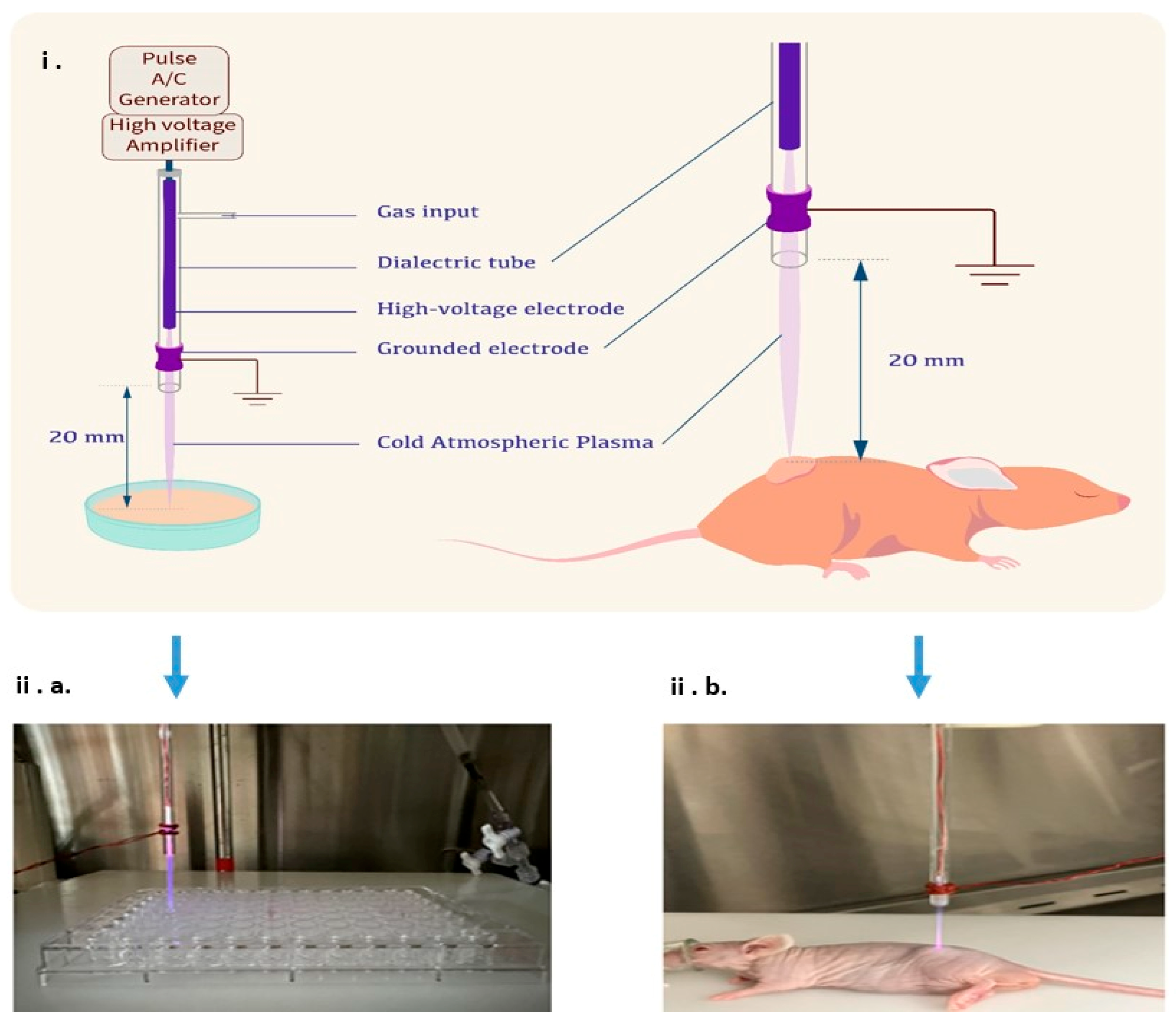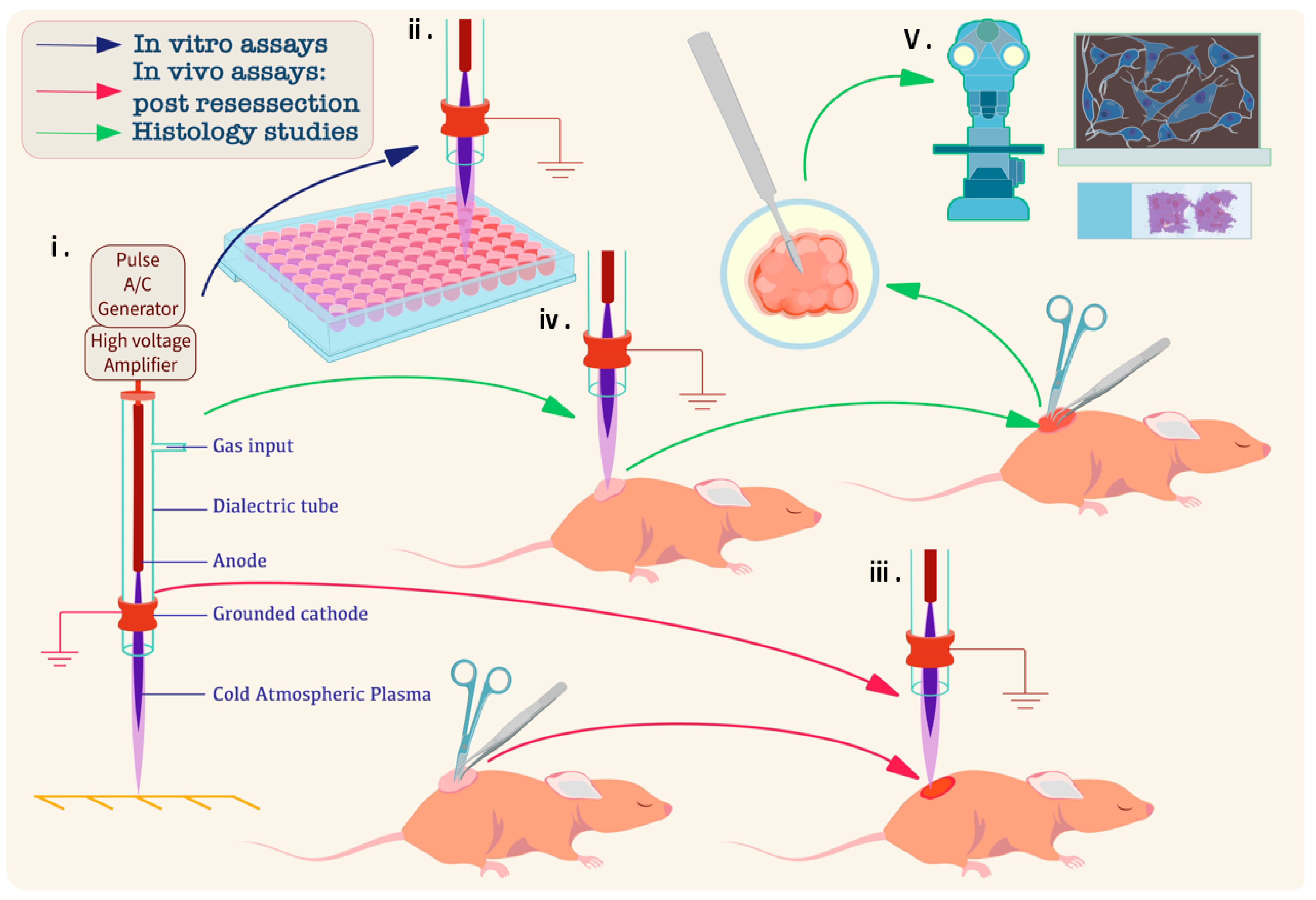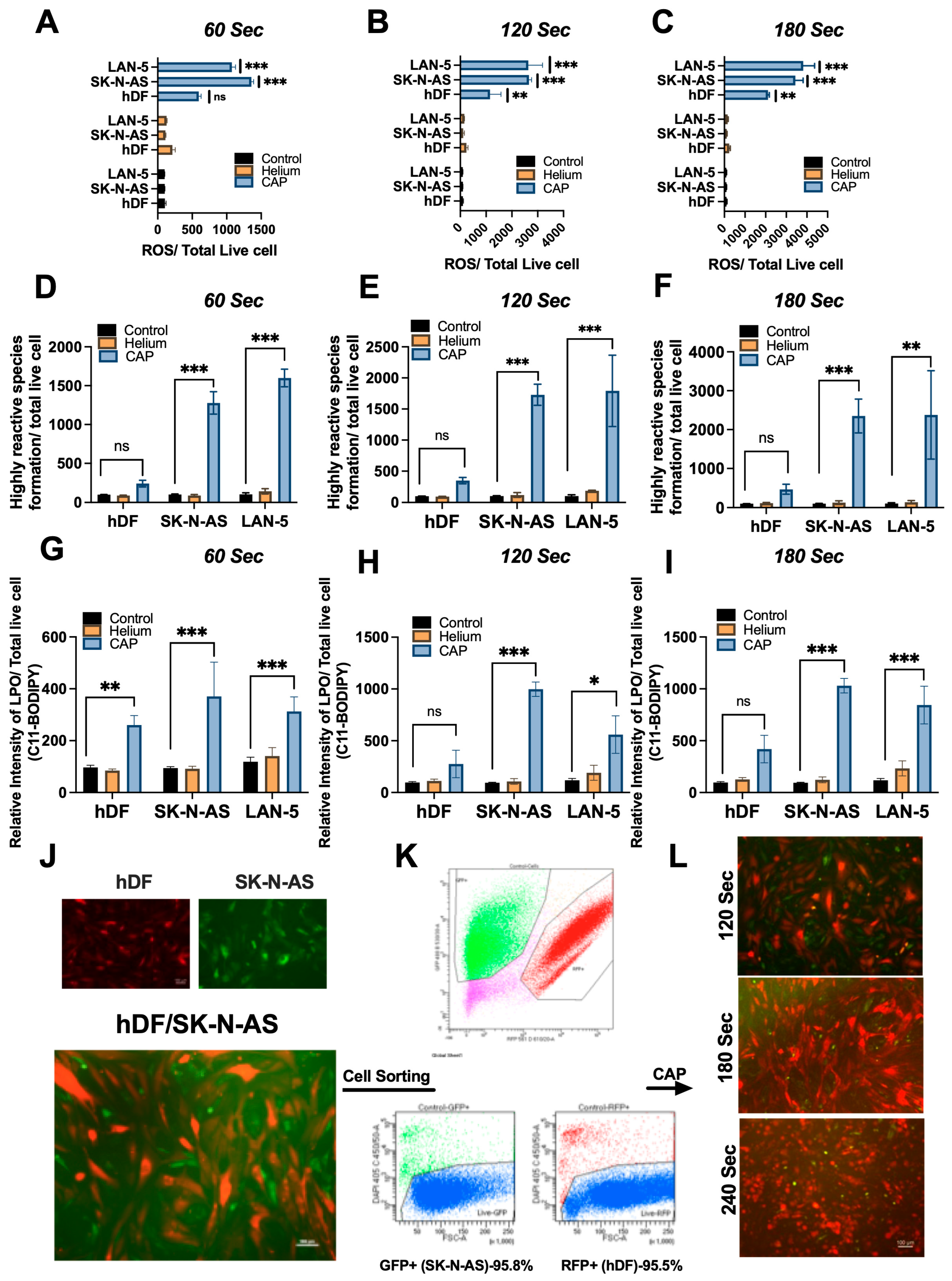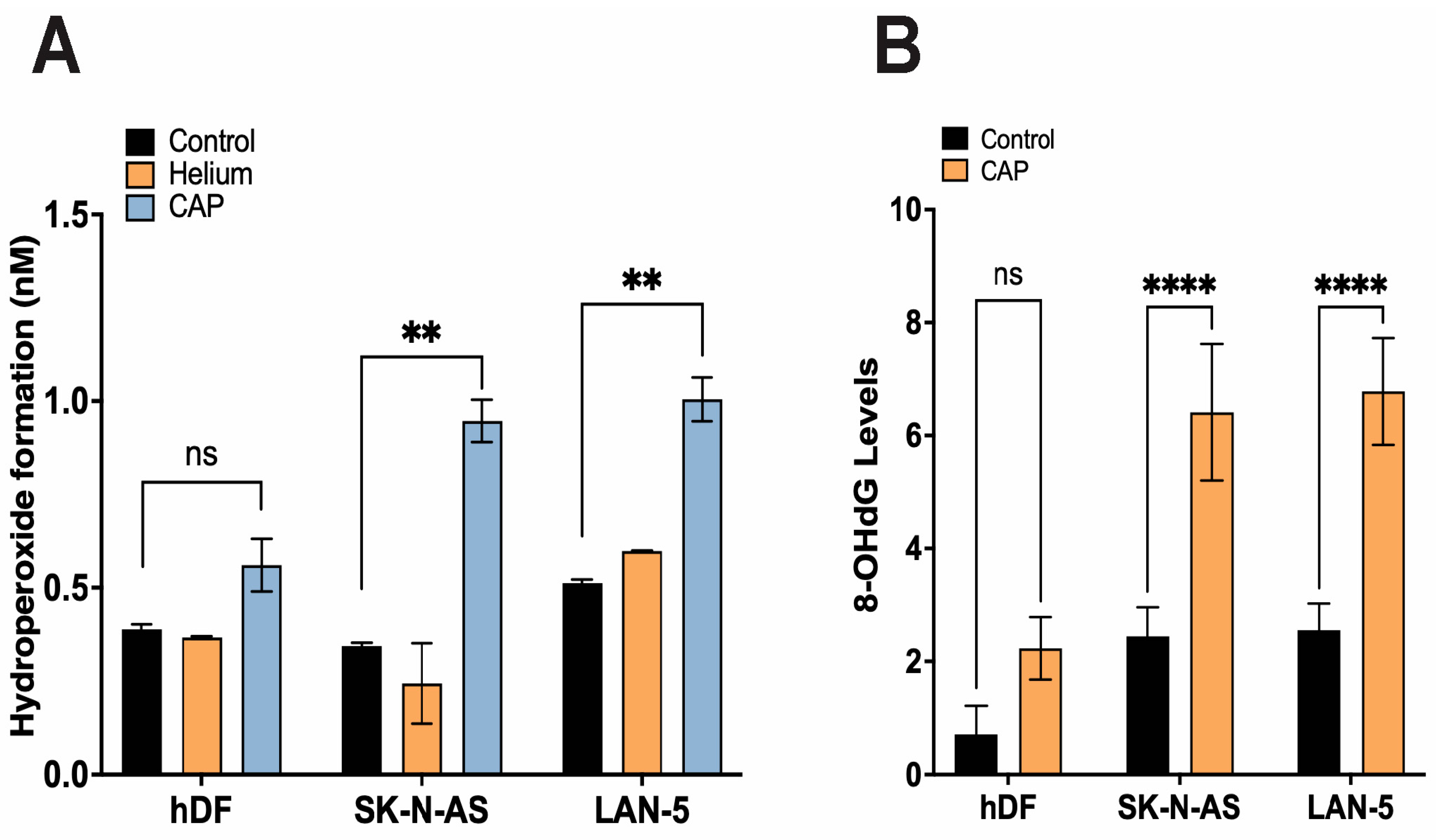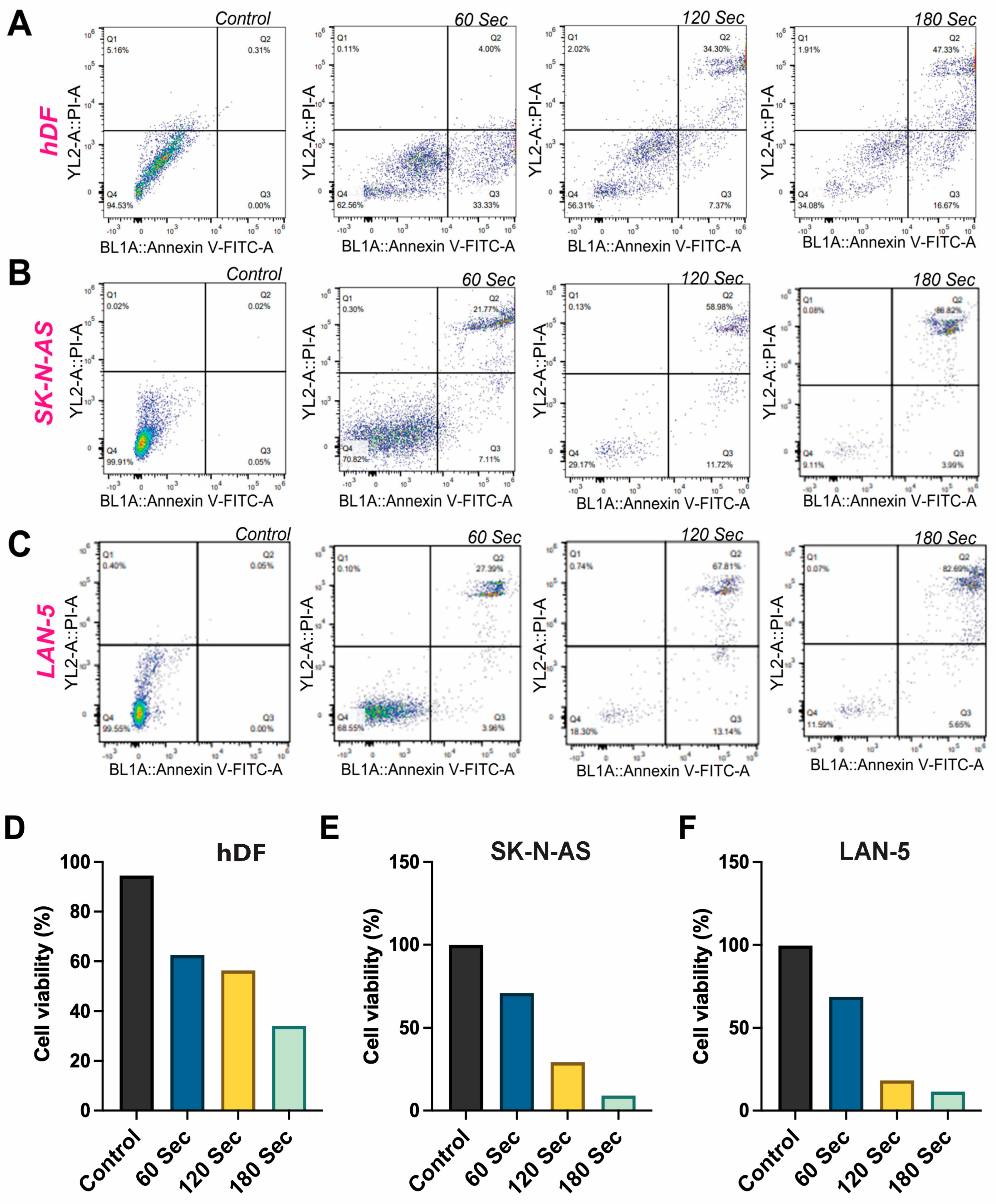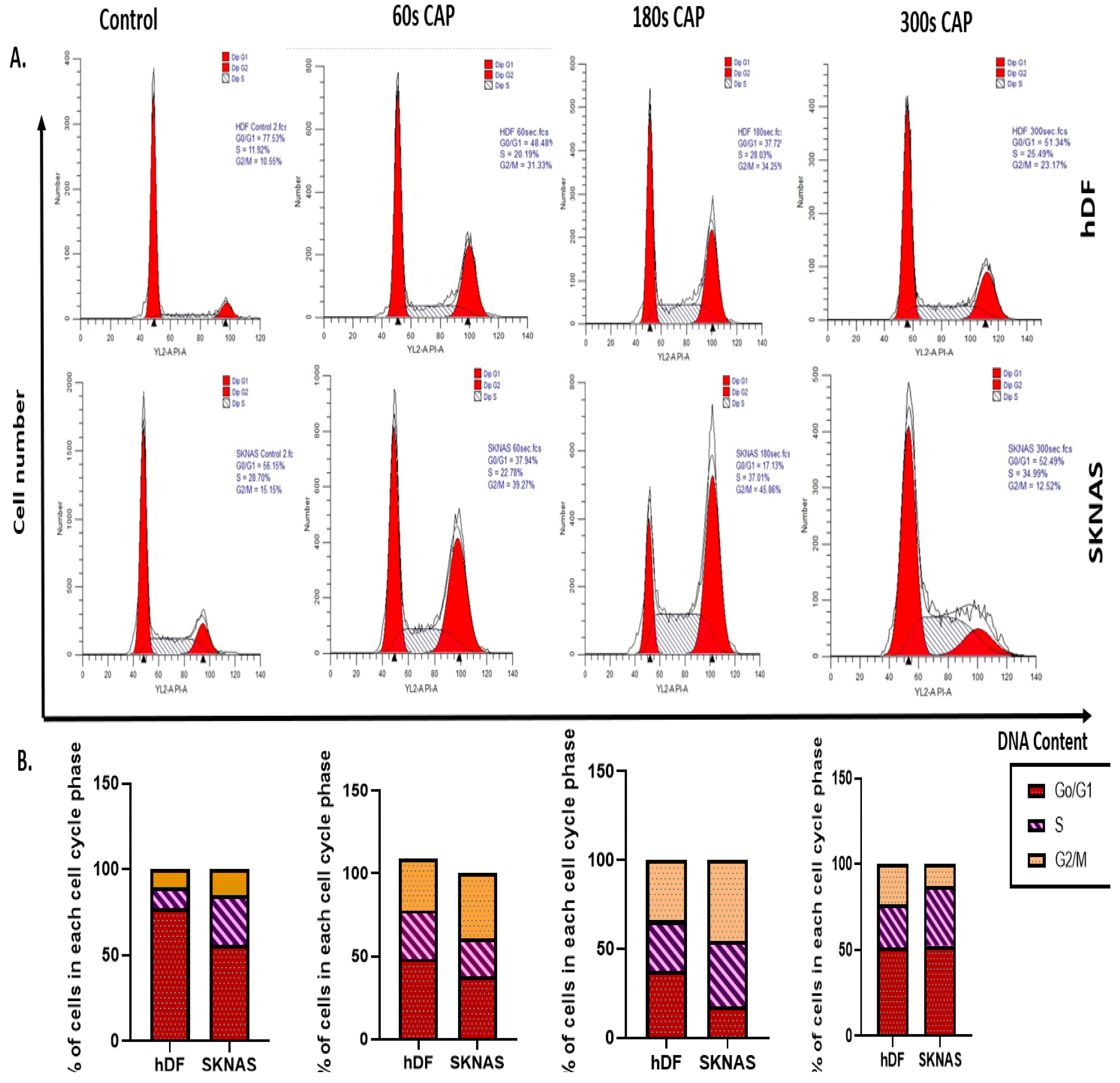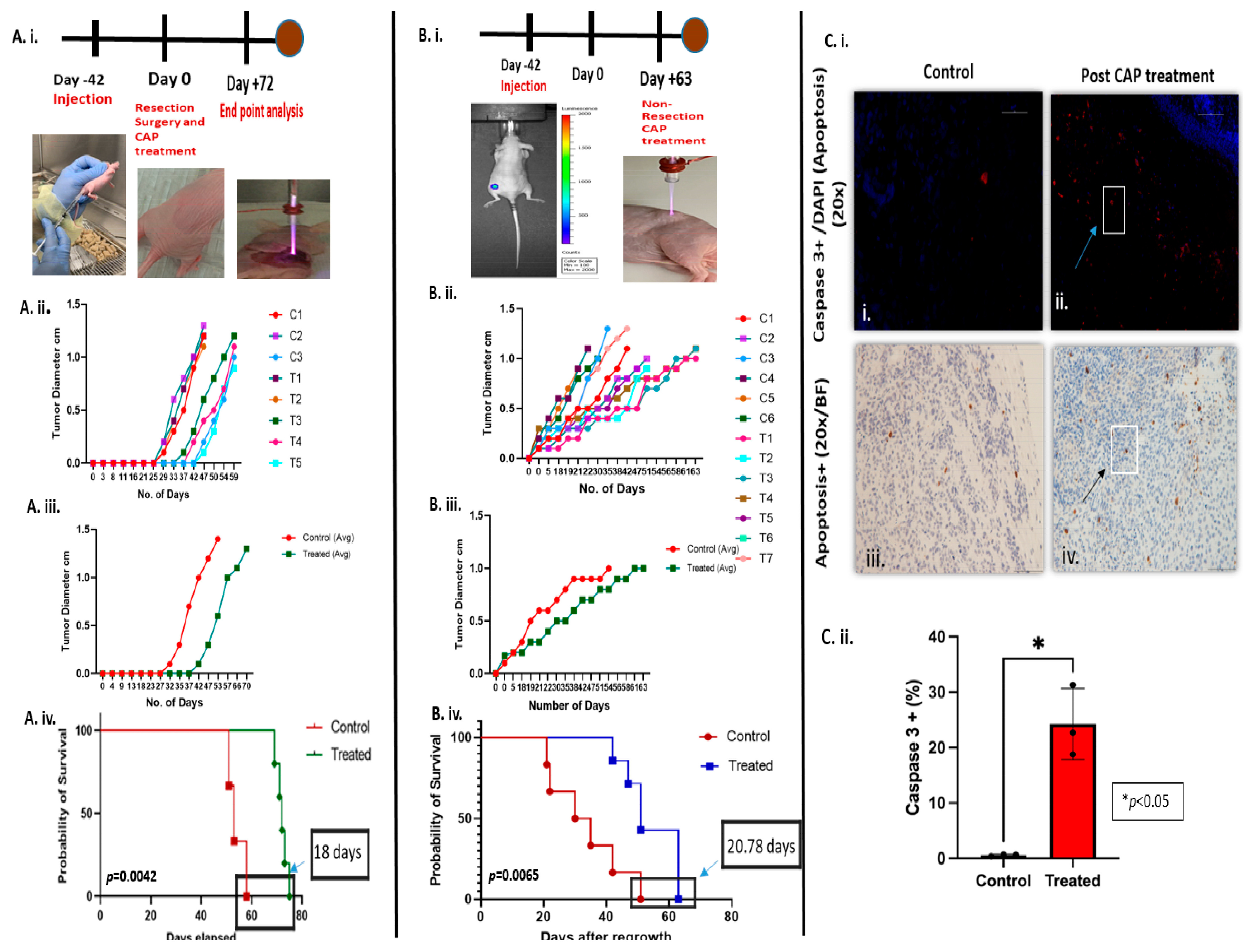1. Introduction
Neuroblastoma (NB) is the most common extracranial solid tumor of childhood, accounting for over 7% of malignancies in children under 15 years old and approximately 15% of pediatric cancer-related deaths globally [
1]. It arises from neural crest cells of the sympathetic nervous system, and predominantly affects infants and young children, with about 90% of cases diagnosed before the age of five [
2]. The clinical spectrum of NB ranges widely, from localized tumors that may regress spontaneously to high-risk cases characterized by widespread metastasis and poor treatment outcomes [
3].
Advanced NB presents significant therapeutic challenges due to its aggressive nature, early metastasis to bones, bone marrow, liver, and lymph nodes, and the difficulty in achieving complete surgical resection [
4]. Despite advances in multimodal therapies such as surgery, chemotherapy, and radiotherapy, the prognosis for high-risk NB remains poor, with less than 40% survival rates beyond five years [
5]. This is exacerbated by the tumor’s propensity to develop resistance to conventional treatments, necessitating innovative therapeutic approaches [
6].
Surgical resection is one of the primary treatment modalities for high-risk NB, but is challenged by the tumor’s infiltrative nature, frequently leaving residual cancer cells that require adjunctive therapies [
7]. These therapies, however, carry risks including secondary cancers, organ damage, and developmental delays, particularly concerning young patients [
8]. Despite multi-modality treatment, local recurrence occurs in up to 35% of patients [
9].
Cold atmospheric plasma (CAP) has emerged as a promising avenue in cancer therapy. CAP, generated at room temperature and atmospheric pressure, comprises ions, electrons, photons, and reactive oxygen and nitrogen species (RONS), which collectively exert cytotoxic effects on cancer cells while sparing normal tissues [
10,
11]. CAP’s ability to induce apoptosis, disrupt cellular functions, and modulate the tumor microenvironment makes it a compelling candidate for targeted cancer therapy [
12].
Recent studies have demonstrated the efficacy of CAP treatment in various cancers, including melanoma, glioma, and neuroblastoma, showing reductions in tumor size and improved survival rates in preclinical models [
13,
14,
15]. The mechanism of CAP on these tumors has been proposed to occur via cell cycle arrest and apoptosis induction in cancer cells, mediated by RONS, particularly hydroxyl radicals (•OH) [
16]. A distinct pre-G1 peak was not detected, consistent with NB, where apoptosis is more reliably assessed by Annexin V/PI rather than pre-G1 fractions.
In addition, although pioneering, previous work examined CAP in a murine NB model and was limited to a single murine cell line without a mechanistic analysis [
13]. Our study expands this by using two human NB lines, normal fibroblasts, mechanistic assays, and in vivo xenografts, thereby establishing novelty and translational relevance.
This study aims to investigate CAP as a potential therapeutic strategy, specifically for NB. We sought to understand how CAP can selectively induce apoptosis in NB cells using in vitro experiments. We then aimed to investigate the efficacy of CAP as primary therapy or as an adjunct to surgery to decrease residual disease, thereby reducing the local recurrence rate.
2. Materials and Methods
2.1. CAP Device
The helium CAP jet device based on the dielectric barrier discharge (DBD) method (
Figure 1) was custom-built by our team at the University of Wisconsin–Madison and optimized for both in vitro and in vivo applications. The system operates as a jet-type CAP generator, utilizing helium as the carrier gas, with a flow rate adjustable between 0 and 3 standard liters per minute (slm). High-voltage pulses ranging from −10 kV to +10 kV at a frequency of up to 20 kHz are applied, enabling precise modulation of plasma intensity. The nozzle-to-target distance can be adjusted from 10 mm to 100 mm, offering flexibility to tailor treatment conditions for different experimental setups.
2.2. Experimental Design
A schematic overview of the study design is presented in
Figure 2. This illustration provides a visual summary of the experiment’s sequential workflow for investigating CAP on NB, including both in vitro and in vivo models, as well as subsequent histological and microscopy-based analyses.
2.3. Cell Culture
NB cell lines (SK-N-AS and LAN-5) provided by Dr. Mario Otto’s lab (University of Wisconsin-Madison) and normal human dermal fibroblasts (hDF) [PCS-201-010], obtained from the American Type Culture Collection (ATCC, Manassas, VA, USA), were utilized for the study. Cells were cultured in Dulbecco’s Modified Eagle’s Medium (DMEM) (Catalog No. 11965092, Gibco, Thermo Fisher Scientific, Waltham, MA, USA) or RPMI 1640 (Catalog No. 11875093, Gibco, Thermo Fisher Scientific, Waltham, MA, USA) supplemented with 10% fetal bovine serum (FBS (Cat. No. 26140-079, Gibco, Thermo Fisher Scientific, Waltham, MA, USA), 50 units/mL penicillin, and 100 µg/mL streptomycin (Catalog No. 15140122, Life Technologies, Carlsbad, CA, USA) and were incubated in a 5% CO2 environment at 37 °C in an incubator, following standard methods. Cells were passaged when confluency reached 70–90%, and all experiments were conducted after 2–3 passages. S.K-N-AS is MYCN non-amplified with TP53 mutation; LAN-5 is MYCN-amplified and ALK wild-type. This helps interpret differential CAP sensitivity.
2.4. Cell Viability Assay
Cells were counted, and approximately 10,000 cells were seeded in a 96-well plate (Corning Inc., Corning, NY, USA). After 24 h of incubation, treated cells were exposed to CAP for 60, 120, and 180 s. Control cells were not treated with anything. Helium-treated cells were exposed to helium gas for 60, 120, and 180 s as an additional control. Following these treatments, cells were incubated at 37 °C for 24, 48, or 72 h. Cell viability was measured using Cell Counting Kit-8 (CCK-8) (Catalog No. CK04, Dojindo Molecular Technologies, Rockville, MD, USA). Specifically, 10 µL of CCK-8 reagent was added to each well and incubated for one hour. The optical density (OD) at 450 nm was measured using a microplate reader (Molecular Devices, San Jose, CA, USA). The percentage of viable cells post-treatment relative to the untreated control was presented as cell viability.
2.5. Quantification of Intracellular ROS Levels Using H2DCFDA and Highly Reactive ROS (hROS) Using HPF Probe [hROS = Highly Reactive Oxygen Species; HPF = Hydroxyphenyl Fluorescein]
Intracellular ROS formation in cells after CAP treatment was estimated using the fluorescent dye dichlorofluorescein diacetate (H2DCFDA) (Catalog No. D399, Invitrogen, Thermo Fisher Scientific, Waltham, MA, USA). H2DCFDA is a nonpolar compound that is converted into a polar derivative (dichlorofluorescein) by cellular esterase after incorporation into the cells. On the day of the experiment, the growth medium was replaced with Hank’s Balanced Salt Solution (HBSS) (Catalog No. 14175095, Gibco, Thermo Fisher Scientific, Waltham, MA, USA) containing 10 μM H2-DCF-DA dye. CAP-treated and helium-treated (60, 120, or 180 s) or untreated cells were incubated for one hour. After washing with pre-warmed PBS, intracellular fluorescence was measured using an excitation of 485 nm and an emission of 530 nm with a microplate fluorescence reader (Molecular Devices, CA, USA). A novel fluorescence probe 2-[6-(4′-hydroxy)phenoxy-3H-xanthen-3-on-9-yl] benzoic acid (HPF; Catalog No. 10159, Cayman Chemical, Ann Arbor, MI, USA) was used at a final concentration of 10 μM to detect hROS, such as hydroxyl radical and peroxynitrite formation, in the cells. The process was similar to what was mentioned previously. HPF exhibits a bright green fluorescence upon reaction with hydroxyl radical (excitation/emission maxima ∼490/515 nm).
2.6. Measurement of Lipid Peroxidation Using C11-BODIPY 581/591
C11-BODIPY 581/591 (Catalog No. D3861, Invitrogen, Thermo Fisher Scientific, Waltham, MA, USA), a fluorescent probe, was used to measure lipid peroxidation and antioxidant efficacy in living cells. hDF and NB cells were cultured in their respective media. C11-BODIPY 581/591 was added to the cells post-CAP treatment or Helium-treatment for 60, 120, and 180 s, alongside untreated controls, at a final concentration of 10 µM. After an hour of incubation, fluorescence intensity was measured using the microplate fluorescence reader (Molecular Devices, San Jose, CA, USA).
2.7. Lipid Hydroperoxide Assay
Lipid peroxidation, a well-established mechanism of cellular injury and an indicator of oxidative stress in cells and tissues, was assessed using the Lipid Peroxidation (LPO) assay kit (Catalog No. 10009055, Cayman Chemical, Ann Arbor, MI, USA). A quantitative extraction method, following the kit’s protocol, was employed to extract lipid hydroperoxides into chloroform, which was used directly for the assay. Absorbance was read at 500 nm using the multimode plate reader (Molecular Devices, San Jose, CA, USA). A dose–response curve of absorbance units versus concentration in nmol was calculated.
2.8. 8-Hydroxy-2′-deoxyguanosine (8-OHdG) Quantitation for Oxidative DNA Damage
Oxidant-induced DNA damage, indicated by 8-OHdG, was quantified using the OxiSelect™ Oxidative DNA damage ELISA kit (Catalog No. STA-320, Cell BioLabs, San Diego, CA, USA), following the manufacturer’s instructions. After 48 h of CAP treatment lasting 60 s, genomic DNA was isolated from cells using a DNA extraction kit (Catalog No. K0721, Thermo Scientific, Waltham, MA, USA) and converted into single-stranded DNA. The control group received no CAP treatment. DNA samples were digested with nuclease P1 (Catalog No. M0660S, New England Biolabs, Ipswich, MA, USA), followed by incubation with 10 units of alkaline phosphatase (Catalog No. M0371S, New England Biolabs, Ipswich, MA, USA) for one hr at 37 °C in 100 mM Tris, pH 7.5. A 50 μL mixture of 8-OHdG standard or sample was added to the well of the 8-OHdG conjugate-coated plate and incubated for 10 min at room temperature (RT). Following this, 50 μL diluted anti-8-OHdG antibody was added to each well and incubated for one hour at RT. After several washes, a 100 μL mixture of diluted secondary antibody-enzyme conjugates was added to all wells, which were then incubated for one hr at RT. After three washes, 100 μL of substrate solution was added, and the mixture was incubated for 5 min. The reaction was stopped with 100 μL of the stop solution, and the absorbance was measured at 450 nm using the multimode plate reader. Results were standardized to the total DNA concentration.
2.9. Apoptosis Assay Using Flow Cytometry
Cells were treated with CAP or Helium for 60, 120, or 180 s. Control cells were not treated. Apoptosis was detected using a FITC Annexin V/Dead Cell Apoptosis Kit (Catalog No. 556547, BD Pharmingen, San Diego, CA, USA). Trypsinized cells were washed twice with PBS, pelleted, and resuspended in the binding buffer. They were then incubated with 5 µL of FITC Annexin V and 5 µL of 100 µg/mL propidium iodide (PI) for 15 min at room temperature in the dark. After 15 min incubation, 400 µL of binding buffer was added to make a 500 µL final solution. Flow cytometry was performed within an hour using an Attune NxT Flow Cytometer (Thermo Fisher Scientific, Waltham, MA, USA), and results were analyzed using FlowJo 10 software (FlowJo LLC, Ashland, OR, USA).
2.10. Cell Cycle Analysis
A total of 10,000 hDF and SK-N-AS cells were seeded into each of the 96 wells. The cells were allowed to grow and proliferate for 24 h. The cells were then treated with CAP for 60, 180, and 300 s and incubated for 24 h. Control cells received no CAP treatment. After incubations, the cells were trypsinized and prepared for cell cycle analysis. At 300 s, SK-N-AS cells showed partial redistribution, likely due to checkpoint adaptation, contrasting with a stronger arrest at 180 s.
Sample Preparation for Cell Cycle Analysis
Cells from each treatment group were collected and pooled to achieve a density of approximately 50,000 cells per tube. These samples were stained with a (Propidium Iodide (PI) (nuclear dye) at a final concentration of 50 µg/mL) using a cell cycle analysis kit (Catalog No. ab287852, Abcam, Cambridge, UK) according to the manufacturer’s standard protocol and incubated overnight at 4 °C in the dark. Following incubation, cell cycle distribution was analyzed using flow cytometry. The results were processed using FlowJo 10 software (FlowJo LLC) to evaluate CAP-induced changes in cell cycle dynamics.
2.11. CAP Treatment on Co-Culture
For co-culture experiments, 10,000 cells/well Green Fluorescent Protein (GFP)-labeled neuroblastoma cells were grown on 10,000 cells/well Red Fluorescent Protein (RFP)-labeled fibroblasts for 24 h. The cells were treated with CAP or Helium for 120, 180, or 240 s. Later, the GFP-positive and RFP-positive cells were sorted. The viability of both cell types was confirmed to be more than 90% before treatment. Cells were treated with CAP, and images were captured under a fluorescent microscope (Leica Microsystems, Wetzlar, Germany).
2.12. In Vivo CAP Treatment
Four-week-old female and male nude mice were obtained from The Jackson Laboratory (Bar Harbor, ME, USA) for the in vivo experiments (
Figure 1). These mice were housed in the containment zone of the animal laboratory at the Research Animal Resource Center (RARC) at UW-Madison. Throughout the study, all mice were handled and cared for in strict accordance with the standard guidelines prescribed by the Institutional Animal Care and Use Committee (IACUC) protocol.
2.12.1. Incomplete Resection Model
A total of 8 nude mice were utilized in the present study. Subcutaneous injections of SK-N-AS cells tagged with GFP/LUC+ were administered into the right or left dorsal side of each mouse. Tumor growth was monitored every 2 days by measuring the largest dimension using a caliper. Once the tumor’s largest dimension reached 1–3 mm, resection surgery was performed, aiming to remove approximately 95% of the tumor tissue. For the treated group, CAP treatment was applied for 300 s to the residual tumor. In contrast, the control group had surgery but received no CAP treatment. Following the surgery, the outer skin was closed with staples, and triple antibiotics were applied to the surgical site to prevent infection. The mice were then monitored post-surgery to observe tumor regrowth and document their progress for further analysis. Towards the end of the experiment (63 days), or if the tumor diameter reached a maximum size of 20 mm or more, or in cases where mice appeared moribund, the mice were sacrificed.
2.12.2. Non-Resection Model
A total of 13 nude mice were included in this experiment. Subcutaneous injections of SK-N-AS cells tagged with GFP/LUC+ were administered into the right or left dorsal side of each animal. Tumor growth was measured by the largest dimension every 2 days. Once the tumor’s largest dimension reached 1–3 mm, the mice received CAP treatment applied directly onto the tumor for 300 s, while the control mice received no treatment. Both groups were continuously monitored for tumor growth and documented for further analysis. Towards the end of the experiment (72 days), or when the tumor diameter reached a maximum diameter of 20 mm or more, or in cases where mice appeared moribund, mice were sacrificed, and the data was censored.
2.12.3. Tumor Diameter Analysis
Tumor regrowth and growth data obtained from both the resection and non-resection studies were processed using Microsoft Excel (Microsoft Office 365, Microsoft Corp., Redmond, WA, USA), and the resulting data were used to generate graphs. To assess survival outcomes, survival curves were constructed, and statistical analyses were conducted using GraphPad Prism version 10.5.0 (GraphPad Software, San Diego, CA, USA). Differences between experimental groups were analyzed using Student’s t-test, with p < 0.05 considered statistically significant.
2.13. Tumor Histopathological Analysis
2.13.1. Tumor Collection
Both control and CAP-treated tumors in the incomplete or non-resection model were collected for analysis 24 h post-CAP treatment.
2.13.2. Tissue Processing and Sectioning
Excised tumor tissues were fixed in 10% neutral buffered formalin for 24 h. Fixed tissues were then dehydrated, embedded in paraffin, and sectioned into 5-μm-thick slices using a microtome.
2.13.3. Bright Field Microscopy
Tumor tissue sections were dewaxed and rehydrated before being stained with hematoxylin and eosin (H&E). Bright-field images were then captured using a light microscope equipped with a digital camera.
2.13.4. Immunohistochemistry (IHC) for Cleaved Caspase-3
Deparaffinized tumor sections were subjected to antigen retrieval using a heat-induced method. After blocking with 5% bovine serum albumin (BSA) (Catalog No. A2153, Sigma-Aldrich, St. Louis, MO, USA), sections were incubated overnight at 4 °C with a primary antibody against cleaved caspase 3 (Catalog No. 9661, Cell Signaling Technology, Danvers, MA, USA). Following washing, sections were incubated with an appropriate secondary antibody conjugated to a fluorophore. Nuclei were counterstained with 4′,6-diamidino-2-phenylindole (DAPI) (Catalog No. D9542, Sigma-Aldrich, St. Louis, MO, USA) according to standard protocol. Immunofluorescent images were captured using a fluorescence microscope.
2.14. Statistical Analysis
In the in vitro experiments, comparisons between the control and CAP-treated groups were done using Student’s t-test, with statistical significance set at p < 0.05 (* p < 0.05; ** p < 0.01; and *** p < 0.001). Results were presented as mean ± standard deviation (SD). Error bars in the graphs represent SD. For the in vivo experiments, survival analysis was performed using the Kaplan–Meier test, and differences in survival between groups were evaluated using the Log-rank (Mantel–Cox) test. A p value < 0.05 was considered statistically significant, with p values calculated directly from the Log-rank test using GraphPad Prism version 10.5.0 (GraphPad Software, San Diego, CA, USA). Histological quantification graphs were analyzed using Student’s t-test, and results are shown as mean ± SD, with p < 0.05 considered statistically significant. All experimental procedures were performed following the respective manufacturer’s standard protocols.
4. Discussion
NB is a challenging solid tumor that afflicts many children. For high-risk tumors, the treatment is extensive and involves many modalities such as neoadjuvant chemotherapy, surgery, bone marrow transplant, radiation therapy, and immunotherapy. Surgery remains one of the critical modalities for the successful outcome of patients with high-risk NB, as more extensive resection, which is often considered more than 90% resection of the original tumor volume, has been shown to improve long-term event-free survival [
17]. However, these tumors often encase vital structures such as major blood vessels and nerve roots, making more complete resection dangerous and often associated with increased complications such as bleeding, unintended nephrectomy, and chyle leak.
In this research, we are exploring CAP as another potential modality in the treatment of high-risk NB. Since CAP has to be applied directly to the tumor, it would ideally be applied only when the tumor is under direct visualization, which can occur during surgical biopsy or resection. Previous studies [
13] have demonstrated that CAP is effective against murine neuroblastoma (Neuro2a) in syngeneic, immunocompetent A/J mice, establishing its antitumor efficacy in an intact immune environment. Building upon that foundational work, the current study was designed to focus on human NB cell lines (SK-N-AS and LAN-5 in in vitro experiments and SK-N-AS in in vivo xenograft models). The primary objective of this study was to elucidate CAP’s mechanistic and selective effects on human NB cells as a critical translational step toward clinical application. In our present research, we investigated the ability of CAP to selectively target tumor cells over normal cells. In the incomplete resection model, we resected about 90% of the tumor to simulate the 90% surgical resection typically observed in a clinical setting. We also tested CAP’s ability to target tumors without resection.
The results of these experiments are very promising. The observed reductions in proliferation and viability of NB cells following CAP treatment align with previous studies demonstrating the cytotoxic effects of CAP on the two NB cell lines that we chose, SK-N-AS and LAN-5 [
12,
14]. We attempted to explore the underlying mechanisms responsible for these effects. There are many possibilities. However, given the nature of CAP, which produces RONS, the increase in intracellular ROS accumulation and lipid peroxidation indicates oxidative stress-induced damage, consistent with the mechanism underlying CAP-induced apoptosis [
10,
16]. The significant elevation in lipid hydroperoxide levels post-CAP treatment further underscores the oxidative stress burden imposed on cancer cells, potentially contributing to cell death [
18]. Additionally, these effects further implicate oxidative stress pathways in NB [
16]. Furthermore, the induction of DNA damage, as evidenced by elevated levels of 8-OHdG, highlights the genotoxic effects of CAP treatment on NB cells [
19,
20,
21]. Future work will include ROS rescue experiments using scavengers such as N-acetylcysteine (NAC) and complementary pro-oxidant challenges, to directly confirm the causal role of ROS in CAP-induced apoptosis.
The differential responses observed between NB cells and normal hDF cells, particularly in terms of viability, apoptotic rates, and alterations in cell cycle dynamics, underscore the selective cytotoxicity of CAP towards NB cells [
22]. The ability of CAP to induce apoptosis specifically in NB cells while sparing normal hDF cells holds considerable therapeutic potential, offering a promising approach for the development of targeted cancer therapies with minimal off-target effects, as demonstrated in other cancer cells [
23]. Using Annexin V/PI data, we clarified that apoptosis is a programmed form of cell death distinct from necrosis, which is caused by uncontrolled external damage. Our findings support apoptosis as the primary mode of CAP-induced cell death, with secondary necrosis occurring only at extended exposures. A distinct pre-G1 peak was not detected, consistent with NB, where apoptosis is more reliably assessed by Annexin V/PI rather than pre-G1 fractions. Future work will also delineate intrinsic apoptotic markers (Bax/Bcl-2, Caspase-9) and extrinsic markers (FADD/Fas, Caspase-8) to clarify the upstream signaling cascades engaged by CAP. Furthermore, the ability to modulate cell cycle dynamics in NB cells suggests that CAP treatment could be tailored to disrupt NB cell proliferation, providing a rationale for further investigation into the mechanistic underpinnings of CAP-induced cell cycle alterations and their therapeutic implications [
24]. Notably, the cell cycle analysis assay utilized a slightly different set of CAP exposure times, which were chosen based on preliminary optimization studies to enhance detection of cell cycle phase-specific effects. Similarly, in co-culture experiments, treatment durations of 120, 180, and 240 s were selected to assess selective cytotoxicity under more physiologically relevant and prolonged exposure conditions, enabling clearer differentiation between tumor and normal cell responses. Importantly, our co-culture experiments further confirmed the selectivity of CAP, demonstrating that CAP effectively induced apoptosis in GFP-labeled NB cells while sparing RFP-labeled normal fibroblasts within the same microenvironment. This reinforces CAP’s potential to target tumor cells specifically without damaging surrounding healthy tissues, a crucial aspect for future localized therapies. The future studies will include additional assays across multiple post-incubation hours to further strengthen mechanistic insights.
Our incomplete resection model highlights the benefit of combining CAP with surgical tumor resection to enhance local disease control in NB. Local recurrence in NB remains a major therapeutic hurdle, often leading to severe clinical complications such as pain and organ dysfunction. While recurrence was observed in all animals, CAP-treated groups exhibited delayed tumor regrowth and increased caspase-3-mediated apoptosis at the tumor site, with minimal damage to surrounding tissues. This supports CAP’s role as an adjunctive therapy that enhances surgical outcomes by targeting residual disease [
15,
22]. These in vivo results highlight that although CAP alone does not prevent recurrence, it can reduce the rate of tumor regrowth when applied locally post-resection, thus emphasizing CAP as a supplement to, rather than a replacement for, surgical resection. This principle suggests that CAP’s most realistic and immediate clinical application is adjunct therapy at the time of surgical resection. These findings align with the overarching goal of improving local disease management, particularly in high-risk NB, where local recurrence contributes to significant morbidity [
17]. CAP’s local application may offer symptom relief and improved control of residual tumor burden when integrated into a multimodal treatment framework, especially when located near critical vascular or neural structures, where complete surgical resection poses significant risks of morbidity. The selective cytotoxicity of CAP toward tumor cells, while sparing normal tissues, positions it as a potential adjunct intraoperative tool for precision therapy. Further preclinical validation is warranted to assess CAP’s safety profile on normal endothelial and neuronal cells before clinical translation in these challenging surgical contexts.
While CAP’s mechanisms are described in terms of oxidative stress and apoptosis, the role of the tumor microenvironment and the immune response in modulating CAP’s effects remains underexplored. Future work should consider how CAP interacts with the immune landscape and extracellular matrix, as this may influence treatment outcomes, particularly in orthotopic or immunocompetent models [
25,
26,
27]. Recent studies further underscore this point, which highlights how plasma-derived oxidants can trigger immune-modulatory pathways that enhance antitumor responses [
28] along with a comprehensive framework for understanding plasma-induced redox chemistry in the biomedical context [
16]. These works support our conclusion that CAP’s effects are not limited to direct cytotoxicity but also extend to shaping the tumor microenvironment and systemic responses, emphasizing the translational importance of integrating CAP into multimodal oncology strategies.
Future studies should employ syngeneic, humanized, immunocompetent mouse models or more complex human organoid models to evaluate CAP’s immunomodulatory potential responses to establish human-relevant tumor responses as a foundation for subsequent immunologic studies. Additional research and clinical trials are needed to better understand the mechanisms of CAP therapy, optimize treatment regimens, and evaluate long-term outcomes in NB and other solid tumors. These investigations underscore the potential of CAP as a valuable addition to existing treatment strategies, particularly for high-risk patients requiring enhanced local control [
7,
17], and highlight its promise as a novel therapeutic approach for this aggressive pediatric malignancy.
Challenges and Limitations
This study is limited by the use of established NB cell lines and fibroblasts, which do not fully replicate the complexity of the in vivo tumor microenvironment. Accordingly, the findings should be interpreted as a mechanistic proof-of-concept. Viability differences in fibroblasts were described as a modest reduction rather than unaffected, in line with the data. In addition, the use of subcutaneous, immunodeficient tumor models does not fully capture the biological and immune complexity of NB in its native context. While CAP demonstrated selective cytotoxicity and induction of apoptosis, the long-term impact on normal tissues and immune responses was not assessed. CAP dosing was standardized across models, but further optimization with additional post-treatment times will be required for clinical translation. We acknowledge the small xenograft cohort size and stress the need for orthotopic and immunocompetent NB models, as well as extended mechanistic analyses in future studies, to strengthen the translational relevance of these findings. Future in vivo studies will employ syngeneic, immunocompetent models to evaluate immune responses alongside tumor control. CAP penetration depth is limited, highlighting its role in localized applications and the importance of optimizing parameters to minimize potential off-target effects on normal tissue.
5. Conclusions
CAP treatment exhibited significant effects on NB cancer cells both in vitro and in vivo. We demonstrated a significant reduction in proliferation and viability, increased intracellular ROS accumulation, augmented lipid peroxidation, drastic increases in lipid hydroperoxide levels, induction of DNA damage, initiation of apoptosis, and alterations in cell cycle dynamics in in vitro experiments. Additionally, the co-culture model strongly supported CAP’s selective cytotoxic action, reinforcing its precision in targeting cancer cells while sparing surrounding normal tissues.
We also showed slower tumor regrowth after incomplete resection with CAP treatment and slower tumor growth after non-resection with CAP treatment in vivo models. These results further highlight that while CAP alone does not prevent recurrence or be used as primary therapy, its localized application post-resection delays regrowth and promotes apoptosis at the tumor margin, suggesting it may serve as a valuable adjunct to surgical strategies in managing residual disease, especially near critical vascular structures where surgical resection is challenging and reducing the risk of symptomatic local relapse. Together, these findings support the use of CAP as a complementary therapeutic strategy to surgery, enhancing local control of NB with minimal off-target effects.
